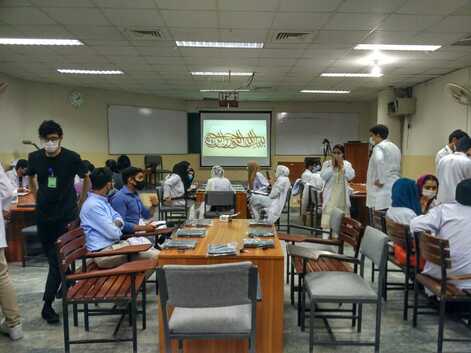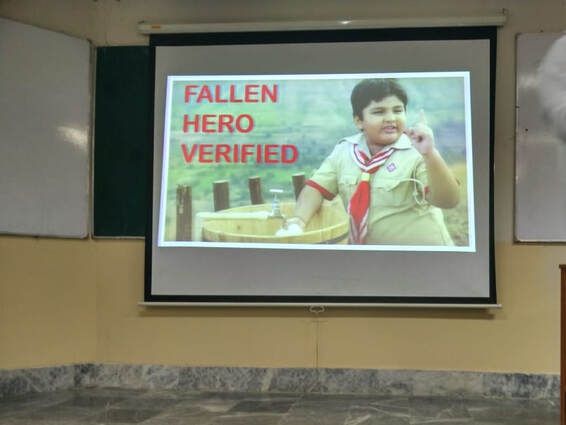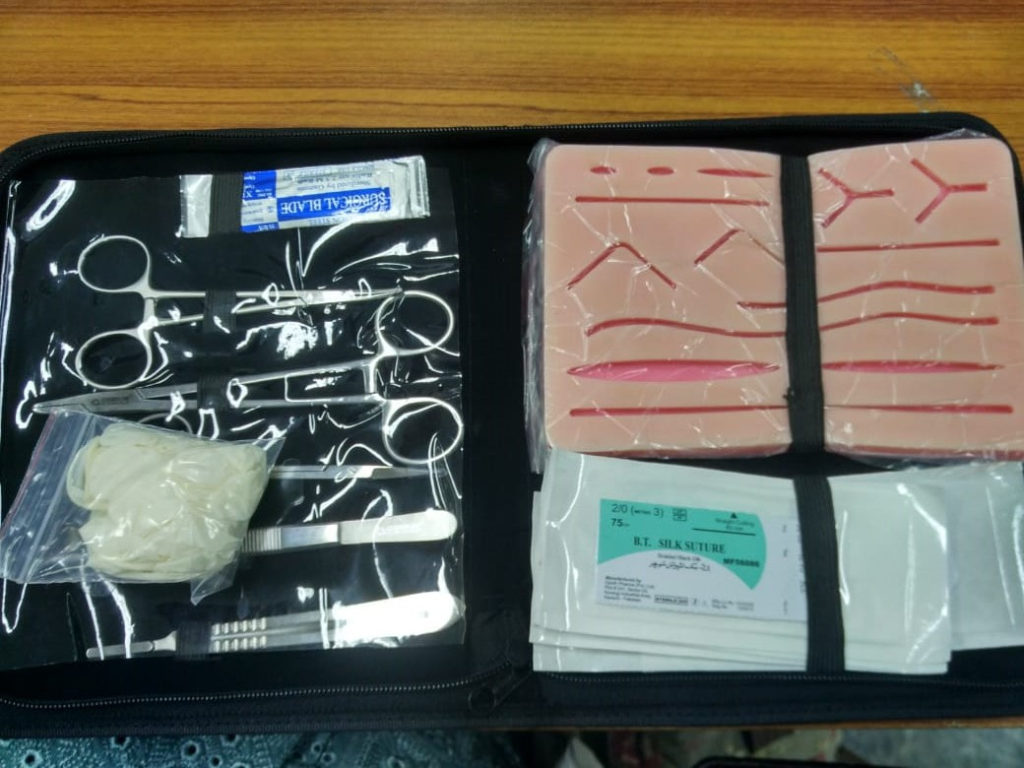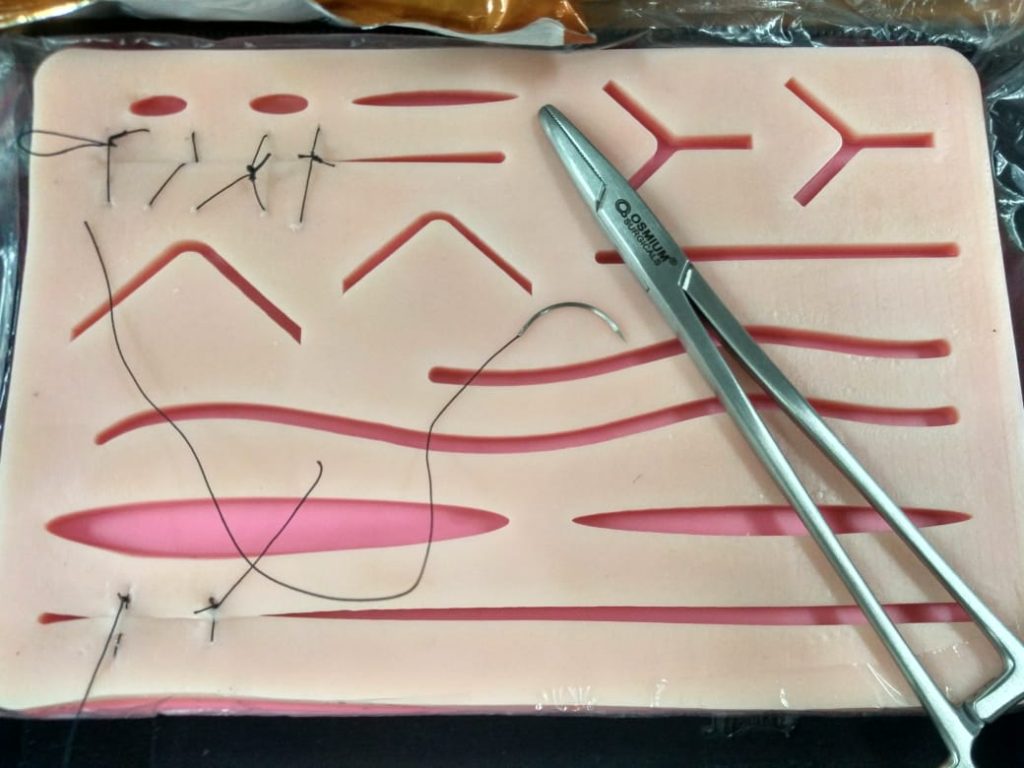
Learning to Learn Medicine
August 3, 2020
From Punjab to Tokyo, With Hope
August 13, 2021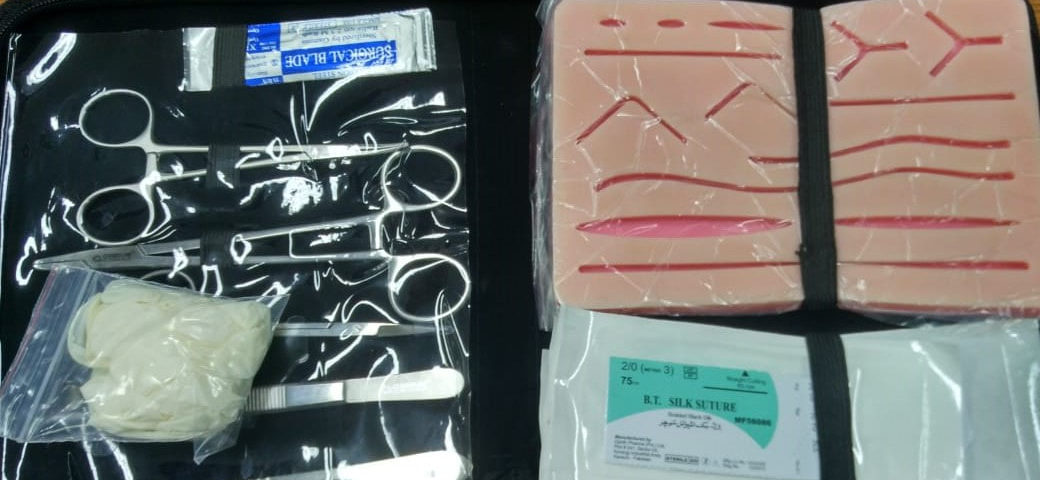
After giving my Eye OSCE exam, I waited till the 4th year lecture hall at Shifa International Hospital got cleaned up and rearranged for the first ever Surgi Skills 101 Workshop, organized by the Surgical Society of IFMSA. There were an overwhelming number of people who had applied for the workshop from which around 40 students attended, which included students from the 2nd to 5th years of MBBS.
I felt very enthusiastic to take part that when I came across this workshop, I immediately registered for it (first come, first served, right?). After a year of online lectures, webinars and workshops thanks to the COVID pandemic, it was a breather to finally have some hands on training and learning in the medical field alongside my peers. The mind can only take in so much; it’s time for the hands to do the job and be close to feeling like a surgeon!
On each table there were suturing kits for each student who had paid prior to attending the workshop. One of the perks of this workshop was that each student received the kit at a discounted price compared to that available in the local market. After settling down, Fesih, a member of the organizing team, gave an overview of the methods of sterilizing and scrubbing that have to be ensured by a doctor in the hospital to avoid contamination and spreading of infection between doctors and patients. Although the COVID pandemic has already trained the masses the proper method of hand washing, in case you’re going to be a future physician, you’re lazy or your saabun (soap) is not slow, it is important to keep your hands properly sterilized along with other methods of maintaining hygiene such as washing the hands first followed by the arms, and not vice versa.
Furthermore, since it’s important to wash your hands for about 2-5 minutes, we must accept that our saabun isn’t slow, the microbes are very small and take time to be eradicated. Hence give credit where it is due and acknowledge that Bunty had the cleanest hands in the Lifebuoy commercial (potential future surgeon?).
After the orientation was done, Dr. Mubarik Rehman from the Surgery Department got down to business in explaining all the instruments and sutures of the suturing kit. Each instrument has a name and a specific function, such as the forceps are used for holding the needle and the hemostat (also called the ‘mosquito’) is used to control bleeding in surgical procedures. If you look at the picture below, on the left are all the instruments with the blades for scalpel on the top left. On the right are the sutures below and the gelatinous sheet with model wounds to practice sutures on (very smooth and soft yet firm). You also get a pair of gloves. It felt pretty cool seeing all these items so organized and kept in a compact, convenient black zipper bag; easy to carry, easy to store and easy to work on.
Before getting to stab the ‘skin’, we had to learn how to even hold the instruments properly. There is a whole science behind everything you do in the process of suturing, such as using the distal phalanx of your thumb and ring finger to hold the forceps through its rings. Often we use the index or middle finger when using scissors so that was a behavior I had to unlearn to learn this new technique. It took a while but I think I got the hang of it.
Afterwards, we uncovered the suture which in this set consists of a needle and a silk thread. The needle can be straight, or it can be curved to about 3/8th, half a circle, etc. which makes make proper sutures convenient as it punctures the skin well. Silk threads aren’t used in actual sutures done on patients but for this practice set it is used. Depending on its numbering, the thread can be thin or thick, and its cross section can be circular or triangular.
For this workshop, we used a 3/0 curved needle silk suture. We learnt multiple suturing techniques such as simple interrupted suture, continuous suture and vertical mattress suture. Throughout this process, a live stream was shown on the display while Dr. Mubarik went (flew?) through each step of the suturing process so everyone in the hall was able to see how it was done. Furthermore, he went to every table and demonstrated and guided each student which was very kind and conscientious of him. In the picture below, I did the simple interrupted suture at the top and vertical mattress suture at the bottom. Through his guidance and those of senior students who guided us as well, I think I did a pretty good first attempt. What do you think?
The whole process of suturing was so much fun. It also felt very therapeutic, focusing on the task at hand, doing it in a repetitive manner and trying to perfect it. I was so focused and engrossed into it that I didn’t even care about the refreshments put in front of me and that the workshop went an hour over its closing time! However, I think one of the most important things we learnt in this workshop was when not to do a suture as well (such as on infected wounds) and why that is so, because as a doctor, you don’t suggest or perform any treatment just for the sake of it. There is always a scientific reason for it, one that doesn’t put the patient through any unnecessary discomfort.
This workshop wouldn’t have been possible without the amazing work and commitment by the organizing team.
I really look forward to the next workshop they organize. Perhaps bandaging and first aid care? Maybe something that involves more stabbing? We’ll have to wait and see. Until then, don’t be shy in learning new skills for experience or just plain enjoyment during your medical career and keep an eye out for the next fulfilling workshop!
Nahin Sani
MBBS, 3rd Year
Link: http://www.shifastudentsociety.com/blog/previous/15
